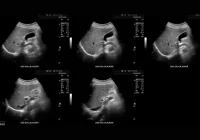Ultra-high-resolution CT promises finer anatomical detail, but achieving consistent image quality depends on how acquisition settings interact with the chosen reconstruction method. One parameter under routine consideration is gantry rotation time, which is often lengthened to help manage dose when small focal spots limit tube current. However, a longer rotation does not influence all reconstruction approaches in the same way. A controlled phantom evaluation compared different rotation times across deep learning reconstruction (DLR), model-based iterative reconstruction (MBIR) and filtered back projection (FBP). The results show that while some methods remain steady as rotation time changes, DLR can lose sharpness at the longest setting tested, underscoring the importance of matching scan parameters to the reconstruction in use.
Stable Results with MBIR and FBP
MBIR and FBP behaved consistently across the range of rotation times assessed. Image noise and the depiction of high-contrast patterns remained largely unchanged whether the gantry completed a fast half-second turn or took longer. In practical terms, edges stayed crisp and the underlying noise pattern did not shift in a way that would distract the eye or obscure structure. This held true across multiple dose levels within the protocol.
This stability reflects the predictable nature of these physics-based methods. Even when projection sampling changed with rotation time, their reconstruction frameworks preserved the balance between detail and smoothness. The comparative measurements used in the evaluation placed MBIR at the top for fine-detail depiction, with FBP following it closely, and both showed minimal sensitivity to whether rotation was short or extended. For teams that rely on MBIR or FBP, this means rotation time can be chosen with flexibility to meet workflow or dose constraints without sacrificing the look and reliability of images within the tested conditions.
DLR Quality Falls at Longest Rotation
DLR told a different story. At shorter rotation times, DLR maintained a favourable blend of sharp edges and controlled noise, producing images with clear fine structure. When rotation was extended to a full second, image properties changed in a way that was visible and measurable. The noise pattern shifted toward broader, low-frequency components, giving images a softer, less textured appearance. At the same time, the ability to depict small, high-contrast details declined compared with shorter rotations.
These effects were seen across the tested doses, indicating that the change was tied to rotation time rather than exposure level. Profile-based checks on line patterns showed lower contrast at the longest rotation, while shorter rotations preserved edge definition. By contrast, MBIR and FBP did not show the same rotation-linked drop in fine-detail depiction.
Must Read: Deep Learning CT Model for Small Airway Disease
Two features of the acquisition help explain why this might occur without asserting any mechanism beyond the observed data. Firstly, a longer rotation reduces the number of views captured per second, altering the temporal sampling of the projections. Secondly, a data-driven method can be more sensitive to acquisition changes if those conditions differ from those it handles best. Regardless of cause, the practical takeaway from this experiment is clear: DLR produced reliable, high-quality results at shorter rotations, but its image texture and sharpness deteriorated at the longest rotation tested.
Implications for Protocol Design
These findings give a straightforward guide for protocol construction on ultra-high-resolution systems. When using MBIR or FBP, rotation time can be adjusted to fit dose goals, patient motion concerns or scheduling needs, as image texture and fine detail stayed stable across the range assessed. Radiographers and physicists can therefore consider other priorities when setting rotation time for these methods, knowing that image appearance remained consistent under the tested conditions.
When DLR is selected, caution is warranted at the longest rotation. Shorter rotations supported the strengths of DLR, sustaining both clean noise appearance and crisp depiction of small structures. Extending rotation to a full second tipped that balance, softening images and reducing high-contrast detail. For tasks that depend on very fine spatial information, such as evaluating subtle edges or tiny high-contrast patterns, aligning DLR with shorter rotation times preserved the intended benefit of the technology within the study setup.
This alignment does not call for wholesale changes to practice, but rather a targeted adjustment: keep DLR in its optimal rotation range and reserve longer rotations for cases where MBIR or FBP are in use or where other constraints dominate. In doing so, imaging teams can maintain the high-resolution promise of the platform while avoiding preventable losses of sharpness tied to acquisition timing.
Rotation time matters, but its impact depends on the reconstruction method. MBIR and FBP offered steady performance as rotation lengthened, maintaining noise character and fine-detail depiction across the settings examined. DLR performed strongly at shorter rotations, yet at the longest rotation it showed a softer noise pattern and reduced ability to display small, high-contrast features. For protocol planning on ultra-high-resolution CT, pairing DLR with shorter rotations and using the flexibility of MBIR or FBP when longer rotations are needed can help safeguard image clarity and texture. This method-aware approach supports consistent diagnostic quality and aligns acquisition choices with each reconstruction’s strengths.
Source: Academic Radiology
Image Credit: iStock










